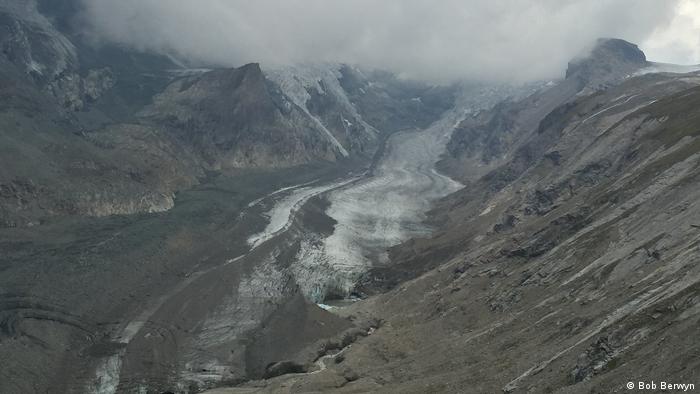Some future climate impacts could be mitigated by limiting global warming to 1.5 degrees Celsius (2.7 degrees Fahrenheit) - but not the demise of alpine glaciers, he added.Most glaciers in Austria and across the Alps are going to disappear by 2100, scientists say. There is already enough heat-trapping pollution in the air to melt nearly all the ice, even if greenhouse gas emissions are cut to zero immediately, said climate physicist Carl-Friedrich Schleussner, who works as a scientific advisor for the NGO Climate Analytics.
A few shards of ice will linger in high shady crags, but the powerful rivers of ice that carved the valleys as recently as 150 years ago will be gone. The climate will probably be too warm for new glaciers to form for centuries to come, Schleussner added.
No slowdown
Extreme melting continued last year, said Andrea Fischer, who heads the team of scientists and volunteers at Österreichischer Alpenverein, an alpine organization in Austria that compiles annual reports about glaciers. The latest findings were released this April.
However, glacier Landeck Kees grew by 1 meter - it's believed that was due to a combination of topography. If the glacier melts back to a place where the terrain is slightly steeper, it may bolt downhill a bit faster. As more meltwater lubricates the base, this accelerates the glaciers' movement.
The Alpenverein's glacier records go back to 1870 - and the new figures confirm melting intensified sharply in the 21st century, just as global temperatures soar to new record highs nearly every year.
Glacier ice is the largest reservoir of freshwater on Earth, holding more water than all lakes, rivers, soils and plants combined.
Reduced flows or seasonal changes in volume resulting from dwindling glaciers could be more noticeable in the smaller streams in the highest valleys. There, it's likely be have impact on river life, including bugs and fish, as well as riverside habitat like shrubs and trees that are, in turn, important for birds....
 The lower end of glacier Pasterze has been shrinking in size -
The lower end of glacier Pasterze has been shrinking in size - the glacier is falling apart.
Much of the uneven melting witnessed by glaciologists have to do with elevation.
The heat settles never to the land of the troposphere and as the warmth
continues to surmount it changes the temperatures in a vertical method. So, the
glaciers found at 2000 feet elevation are shrinking because there is far less
recharge (snow) accumulating at the top of the glacier. When a glacier has little
to no recharge year after year, the glacier will melt.
I sometimes think if glaciers as a natural dam. The land underneath is covered in
solid water and sustains a great deal of weight on it, no different than a
constructed dam like the "Hoover Dam." As the ice melts and is not replaced
the land is exposed as if the water behind the dam is falling in volume.
The glaciers at higher elevations, such as 7000 to 10,000 feet, will receive
recharge as the water vapor, due to a hot land surface, evaporates and is then
found in clouds at much higher elevations. These clouds contain the water vapor
that was once found nearer the surface and will snow on the higher elevation
glaciers.
Higher elevation glaciers will continue to grow and extend their terminus (the front
of the glacier) forward until the heat reaches the higher elevations and then
the same phenomena found in the lower elevation glaciers will occur.
The glaciers found near oceans, such as the Juneau Icefields, will melt quicker
than those found inland simply because the oceans are absorbing the heat
on a continual basis rather than seasonal.
